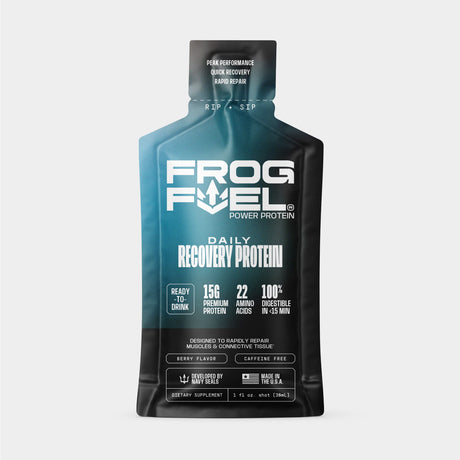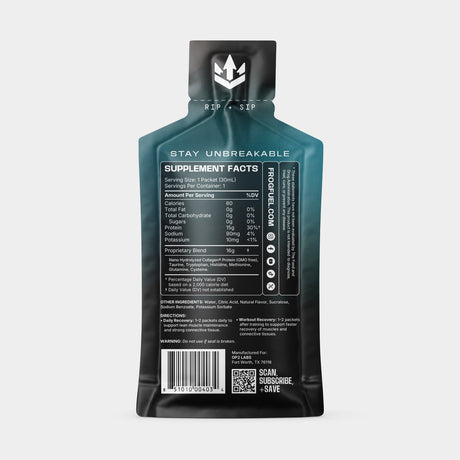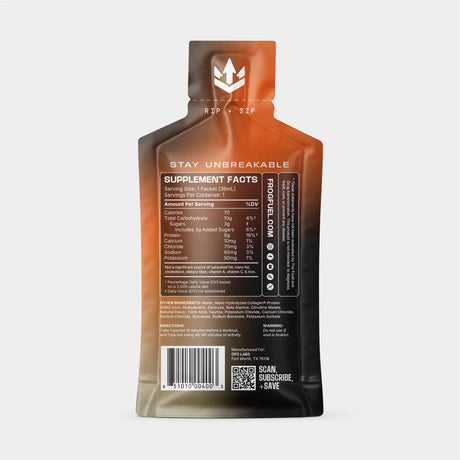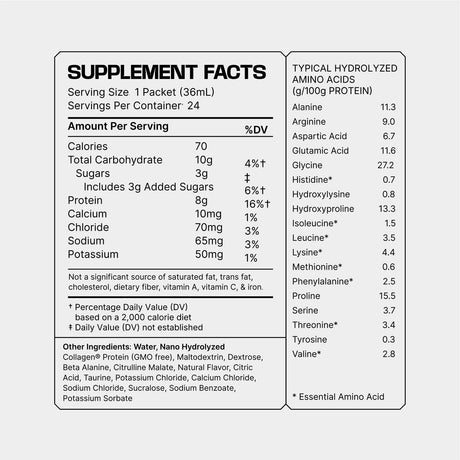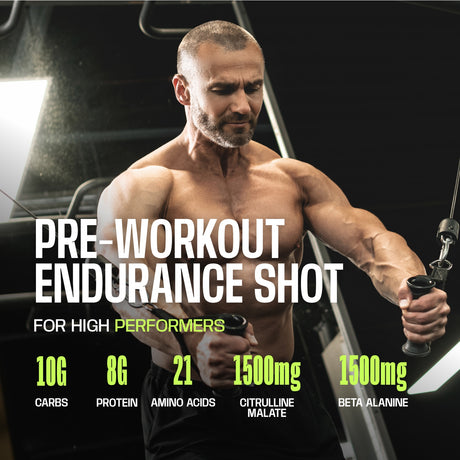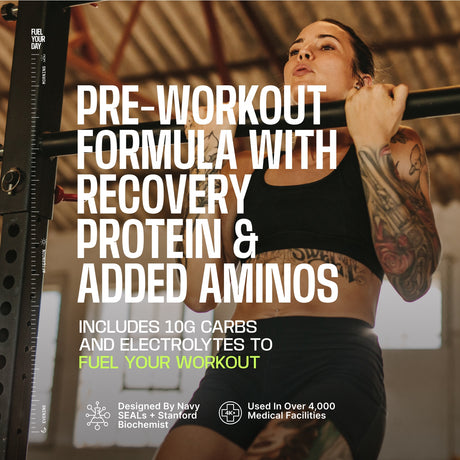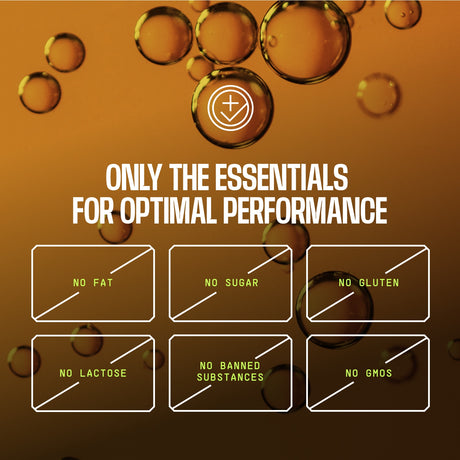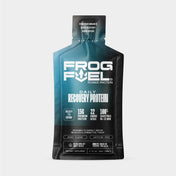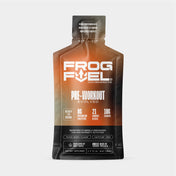Spend enough time researching nutrition and you’re bound to encounter information on “amino acids.” But what are amino acids, exactly?
Most information on amino acids seems to assume you’re a chemistry or medical student studying for some kind of test. It’s all about covalent bonds and transferring atoms, which isn’t super helpful if you’re trying to put together a nutrition plan.
Today, we’ll be looking at amino acids for the rest of us, in simple terms, so you can use these basic building blocks of life to build a stronger, healthier you.
We’ll start off with a quick overview of amino acids and what they can build. Then, we’ll jump into how you can use this information for your own fitness journey. We’ll close out with some advice on amino acids supplements, who needs them, and what to look for.
So what are amino acids good for? Let’s find out!
What are amino acids?
Amino acids are the most basic building block of life. That is, they’re the most basic building block of proteins, which are required for cellular function in every living organism on Earth.
There are more than 500 unique amino acids on Earth, but the human body only uses about 20 of them. Amino acids bond together to form different proteins in plant and animal tissue. The human body can extract some of these to form its own proteins.
It’s hard to answer “What are amino acids?” without turning this into a little bit of a chemistry lesson, but we’ll keep it to a minimum. Amino acids come in roughly 4 groups: hydrophobic, uncharged, acidic, and hydrophilic. Each group will interact with your body's natural chemicals differently. The different properties of each group also impact where they can be found in nature.
What are amino acids made of?
Amino acids are made up of groups of atoms. Different arrangements produce different amino acids, which can react with natural chemicals to form peptides and proteins. All amino acids start with a carbon atom attached to another carbon atom. (If you’ve ever heard humans referred to as “carbon-based life-forms” in sci-fi, this is why!)
What are amino acids, after you have a couple of carbon atoms? Well, you’ll need some nitrogen atoms, some oxygen atoms, and usually some hydrogen atoms. After that, it really depends on what kind of amino acid you’re making. Each one has a side chain of different atoms, arranged in slightly different ways.
This is what makes some of them hydrophobic – meaning they repel water – while others are hydrophilic – meaning they attach to water. These side chains are what make the amino acid work, and they’re so precise that even changing one or two atoms can cause an entire protein structure to collapse!
What do amino acids do for the body?
These amino acids are delicate machines, and they do run the show. But what show are they running? What are amino acids doing in your body all day?
Mostly, they’re building proteins in cells that do specific jobs.
One thing that amino acids are especially good at is sending signals between cells. These signals help your body communicate with your brain about things like hunger, thirst, and fatigue. They also communicate much subtler needs, like muscle building, hormone regulation, healing, and energy levels.
Each amino acid does a different job, and most of them do more than one. They help to manage nearly every function your body has – including making more amino acids! These small but mighty molecules almost never work alone, though. They usually group into peptides and proteins once they’re in cells.
What are peptides?
Peptides are short chains of amino acids. They’re not quite proteins, but they’re more than one amino acid. Peptides are between 2 and 50 amino acids chained together. So what are amino acids doing when they link together to form peptides?
Peptides are more unstable than proteins, but they’re more effective than amino acids on their own. Peptides are key in regulating different hormones and delivering signals. Insulin is a peptide your body uses to regulate blood sugar, which leads to one of the biggest amino acids benefits we’ve discovered to date.
Peptides have been used in several medicines and therapies. Since peptides work in such specific jobs and are so small, they can target illnesses and injuries very precisely to help your body heal itself. And your body is already used to working with peptides and proteins, so the risk of side effects tends to be low.
Now, what about proteins? What are amino acids doing in your body when more than 50 of them link up to form a protein? Let’s take a look.
What are proteins?
Proteins are the main structural components of your cells. They hold your cells together, but they also direct traffic in your cells, so to speak. There are over 100,000 kinds of protein in your body, and they all have different jobs.
Some proteins decode the blueprints in your DNA to build and repair cells. Others act as your immune response team, preventing infections from foreign cells. Some proteins even transport small molecules in between cells, while others act as gatekeepers to let only transport proteins through.
What are amino acids doing in these proteins? Amino acids build the proteins, giving each one the information and materials it needs to do its job.
Complete and incomplete proteins
The jobs that proteins do are studied in chemistry and medicine. When it comes to nutrition and fitness, though, you might have heard about complete vs incomplete proteins. This isn’t a type of protein in your body, but it is a type of protein in the food you eat.
“Complete” proteins contain all 9 of the essential amino acids, while “incomplete” proteins are missing one or more. We’ll talk more about essential and non-essential amino acids in a moment. When it comes to proteins, though, remember that your body is constantly building its own proteins using the materials in the foods you eat.
What are amino acids, if not the exact materials your body needs to build those proteins?
What’s the difference between an amino acid, a peptide, and a protein?
Amino acids, peptides, and proteins are pretty similar, and it's easy to get them confused. What are amino acids vs peptides vs proteins? Aren’t they all just the same thing in a different order?
Yes! Amino acids are like building blocks. Peptides are like a short tower, and proteins are like a house.
Amino acids are fairly stable but aren’t very powerful on their own. Peptides are more effective than amino acids, but because they’re so small, they’re pretty unstable. Proteins are the most complex and stable of the three, but they’re still built from the same amino acid building blocks.
When it comes to nutrition, there’s no need to get too bogged down in these details. Most of the time, when a food is rich in one or more amino acids, it’s a protein-rich food. The only time you’ll encounter amino acids on their own is in supplements or medicine, which we’ll talk about later.
For now, let’s take a look at the two main categories of amino acids in nutrition – essential and non-essential.
Essential amino acids
What are essential amino acids? Essential amino acids are the name for the 9 amino acids your body can’t make on its own. This means you have to get them from the food you eat.
So what are amino acids that must be in your diet because your body cannot make them? The 9 essential amino acids are histidine, isoleucine, leucine, lysine, methionine, phenylalanine, threonine, tryptophan, and valine.
Since you need to get these from your diet, some people with dietary restrictions may find they aren’t getting enough of one or more of these amino acids unless they make an effort to include them. If you suspect you have a deficiency in any nutrient, you’ll want to speak with a doctor or nutritionist for more personalized advice on your health.
Like any amino acid, essential amino acids each have their own job to do within the body. So what are amino acids in the “essential” category good for? And what are some symptoms of a deficiency?
What are essential amino acids good for?
What are amino acids good for, if you have to keep consuming more in your diet to stay healthy? Does your body use them for anything important? Absolutely!
Essential amino acids, across the board, are used by your body to build and repair muscle tissue, regulate immune responses, regulate your mental functioning, and transport nutrients. Each one has unique properties, but they also overlap in many ways. This means that deficiencies in any essential amino acid have similar symptoms.
Deficiencies are most common in infants and the elderly, but can also occur in people with dietary restrictions. Symptoms of essential amino acid deficiencies include poor immune response, muscle wasting, slow healing, anemia, and reduced mental function or moods.
Generally, though, getting plenty of essential amino acids in your diet isn’t a problem. For athletes in particular, amino acids can help reduce soreness and speed recovery, so make sure your diet is rich in them!
Foods rich in essential amino acids
Adding more foods rich in essential amino acids to your diet is very simple! One place to start is by looking up the amino acids in the foods you already eat regularly. You can then check that list against the 9 essential amino acids to figure out which essential amino acids benefits you’re missing out on.
What are amino acids-rich foods you can add to your diet? When it comes to essential amino acids, high-protein foods should be your go-to. Nuts and seeds are typically high in lysine, histidine, methionine, isoleucine, and/or phenylalanine.
Meat, fish, and eggs are rich in lysine, histidine, methionine, isoleucine, phenylalanine, and tryptophan. Dairy products often contain high amounts of threonine, valine, isoleucine, leucine, phenylalanine, and tryptophan. You can also find essential amino acids in whole grains, soy, and mushrooms.
How do we analyze foods to find out what are amino acids in them? Many foods have had their amino acid profile analyzed through a process known as hydrolyzation. The food is broken down until the proteins split into peptides, which makes analyzing the amino acids available much easier, whether those are essential or non-essential amino acids.
Non-essential amino acids
What are amino acids that are “non-essential”? Does that mean you don’t have to worry about getting them in your diet? Not necessarily. Non-essential amino acids are the ones that your body can make on its own.
Just because your body can make them, though, doesn’t mean it’s easy. In some situations, like pregnancy, illness, or injury, some of these “non-essential” amino acids actually become essential. This is because there’s no way for your body’s production to keep up.
Even the non-essential amino acids that don’t become essential shouldn’t be forgotten about! Remember, amino acids are building blocks. Think of LEGO bricks, for example. You can make a 2x6 LEGO brick by putting two 1x3 bricks next to each other. And in some cases, that’ll work just fine! In other cases, though, a 2x6 brick would be much easier and work better.
Including non-essential amino acids in your diet is the same. Your body can make them, but giving it the materials can prevent unnecessary stress. This is especially true when you’re trying to build muscle or heal from an injury.
What are amino acids that are “non-essential”? There are 11: alanine, arginine, asparagine, aspartic acid, cysteine, glutamic acid, glutamine, glycine, proline, serine and tyrosine.
What are non-essential amino acids good for?
What are amino acids good for, when they aren’t essential? Non-essential amino acids do many different jobs in your body. Some play a key role in building proteins and facilitating cell communication. Others help regulate your energy levels, immune response, and inflammation levels. And others break down toxins and act as antioxidants.
Non-essential amino acids haven’t been studied as closely as essential amino acids, but they’re no less important. “What are amino acids doing for the body?” is a complex question, and we’re still trying to understand the intricacies of it.
Non-essential amino acids are still being studied, so there isn’t as much concrete information about how they help the body. So far, though, research is conclusive on one point – your body needs non-essential amino acids, too.
Foods rich in non-essential amino acids
Many of the foods rich in essential amino acids are also rich in non-essential amino acids. What are amino acids doing in a high concentration in these foods? Most foods that are high in protein have a few things in common.
Some high-protein foods are animal products, like meat, fish, eggs, and dairy. These are high in essential and non-essential amino acids because the animal that the food comes from also needs them. But it’s not just animals!
Beans, legumes, nuts, and seeds are also high in both essential and non-essential amino acids. What most of these have in common is that they’re seeds. Seeds are packed with nutrients, since the plant that makes them wants to give them everything they need to survive.
This includes protein, which all living things need for cell function. As plants grow and mature, they use up some of the nutrients in the seed and create their own. That’s why leafy greens – like spinach, kale, and collard greens – are rich in several non-essential amino acids, but lack most essential amino acids.
Amino acids’ health benefits
What are amino acids’ benefits for health and wellness? Obviously, there are many! The first amino acid, glycine, was discovered in 1820. It wasn’t until 1953 that glycine’s place as a building block of life was cemented, and we’ve been continuing to explore amino acids’ place in our bodies ever since.
Amino acids' benefits can affect your whole body, including your mental health! Several amino acids help regulate the production of dopamine and serotonin, your body’s “happiness” hormones. There are also amino acids that help with the repair and protection of neurons, which can influence your memory and mood.
What are amino acids’ benefits beyond mental health? Let’s take a look at a few of the things amino acids can do for your body.
Can amino acids help with weight loss?
Amino acids do help with weight loss! There are some common misconceptions about how amino acids do this, though. What are amino acids doing in the body to boost weight loss? Fat oxidation.
Fat oxidation is also called “fat burning”, and it’s the process of your body breaking down fat cells and using them for energy. Amino acids are especially good at helping your body boost this fat oxidation process.
Amino acids benefits don’t extend to your metabolic rate, though, so it’s important to combine them with exercise and dietary changes. Amino acids aren’t a quick weight loss solution, but they’ll absolutely support your weight loss goals.
Incorporating foods naturally rich in amino acids is a great place to start already! You’ll also want to reduce your intake of sugar, refined carbs, and trans fats.
Some people use amino acids supplements to help with weight loss. We’ll talk more about amino acids supplements in a bit. For now, the important thing to remember is that you don’t need to supplement with amino acids for their weight loss benefits, but they may be more noticeable if you choose a supplement.
Can amino acids speed healing?
Amino acids can help speed healing, but similarly to fat burning, it’s not a quick-fix solution. What are amino acids providing that help to speed healing? Remember, amino acids link up to form proteins that form the structure for all of your cells.
Amino acids – arginine and glutamine, in particular – help with the formation of collagen (more on that soon). This makes it easier for your body to build and repair damaged tissue, which can speed up healing over time.
What are amino acids good for if they don’t make an immediate difference? Remember, amino acids are building blocks. Your body needs enough of them to make changes, and building anything takes time. This is why eating a diet rich in amino acids is the best way to access all their benefits.
Amino acids benefits for athletes
Amino acids benefits for athletes in particular go beyond just weight loss and quicker healing. What are amino acids doing for athletes? Well, related to quicker healing, amino acids can reduce muscle soreness when consumed before a workout.
Amino acids help with building muscle mass and strength. This only makes sense, since building muscle tissue is many amino acids’ primary job. For athletes, this means that amino acids make your workout more effective and leave you less sore.
Both of these are related to collagen, but what is collagen? What are amino acids doing that help create it, and why? Let’s take a quick look at this powerful protein.
What is collagen?
Collagen is a protein. It’s the most abundant protein in the human body and is also found in animal products. Your body produces collagen naturally, but production slows as you age. This is part of why your skin wrinkles and your sprains heal more slowly as you get older. But what is collagen? And what are amino acids doing working with it?
Collagen is a strong, stretchy protein. It forms the basis of your bones, skin, joints, muscles, and organs. Your body uses collagen to build and repair itself, and amino acids are the building blocks that make up that protein. Since collagen is a protein, you might be wondering, is collagen a complete protein?
No, collagen isn’t a complete protein, since it’s missing tryptophan. It’s rich in several other amino acids, though. That includes the ones that help your body produce, you guessed it, more collagen!
Which amino acids is collagen rich in?
There are several amino acids in collagen. What are amino acids that collagen has plenty of? Well, to start, 8 of the 9 essential amino acids are in collagen. It’s missing tryptophan, but as long as you get your tryptophan from a different source, you’re set to go.
Collagen is also rich in some non-essential amino acids, but which ones depend on where your collagen is coming from. Bovine collagen has a slightly different nutrition profile compared to marine collagen, for example.
Generally speaking, collagen will have higher than usual levels of cysteine, glycine, proline, and tyrosine. In dietary collagen, like in the human body, these will typically be linked with other molecules to form the collagen protein.
This means that the amino acids in dietary collagen are hard for your body to access. Hydrolyzed collagen solves this problem by breaking down the collagen protein into smaller peptides, which makes the amino acids in collagen easy for your body to use.
Do you need amino acids supplements?
Like any other supplement, you can find all kinds of amino acids supplements, making all kinds of promises. Some of them seem believable, while others make completely outlandish claims about what they can do for your health. What are amino acids supplements for? Does anyone actually need them?
Amino acids supplements can help certain goals for athletes, like building muscle, losing fat, and decreasing muscle soreness. The specific supplements marketed toward athletes for this are called “BCAA”s, or “branched-chain amino acids”. They’re not typically geared toward solving a deficiency, which should only be done under the supervision of a healthcare professional.
For most people, an amino acids supplement isn’t necessary. Your normal protein intake should provide you with all the amino acids you need. So when it comes to BCAA supplements, should you incorporate them into your routine? What are the pros and cons?
Amino acids supplements benefits
There are a few amino acids benefits for athletes when you choose to supplement. We’ve already discussed three – reduced muscle soreness, increased muscle mass, and increased fax oxidation. What are amino acids supplements other benefits?
Supplementing with amino acids can reduce your perceived exertion level. This means you’ll be working just as hard, but you won’t feel as tired. As a result, amino acids positively impact your endurance.
Some athletes supplement their training with amino acids to make it more efficient. It’s important to remember, though, that BCAAs do have a few noted side effects.
Amino acids supplements side effects
BCAAs are generally considered safe, but growing evidence shows negative side effects caused by long-term consumption. What are amino acids supplements side effects like? They typically affect muscles, but not exclusively.
Side effects can include nausea and vomiting, muscle cramps or spasms, and numbness or tingling in the skin. You may also experience neurological side effects like irritability or fatigue. Some people also develop insulin resistance in response to certain amino acids supplements.
More information is needed to determine the exact amounts and lengths of time amino acids supplements are safe. While this is still being studied, be careful with the supplements you choose. If you notice any negative side effects, stop taking the supplement and reach out to your healthcare professional immediately.
Choosing a safe amino acids supplement
Choosing a safe supplement is key in avoiding negative side effects. One of the first questions to ask yourself is whether there’s a safer way to accomplish the same thing. What are amino acids supplements doing for you, and what other ways can you get those amino acids?
Sometimes, people jump to a supplement when they could make a dietary change instead. Or they opt for the newest, most experimental supplement instead of a safe, tested alternative.
When it comes to amino acids supplements, choosing a high-quality protein supplement will typically support your goals without the same risk. A collagen supplement enriched with tryptophan, for example, has all the same amino acids that a BCAA supplement would, but a much smaller risk of side effects.
When choosing any supplement, buy medical-grade when possible. This certification means that your supplement was held to a higher FDA standard compared to other supplements. You’ll also want to look out for any filler ingredients like sugar, starches, or nutrients other than what you’re buying the supplement for.
Amino acids – building a better you
What are amino acids? They’re the building blocks of your body, and you can use them on your fitness journey. Giving your body plenty of essential and non-essential amino acids means that it’s ready for anything.
You can start by including a wide range of amino acids in your diet. In the gym, choose liquid protein shots that are high in both essential and non-essential amino acids. These tiny molecules can help you build to any goal, no matter how big!


